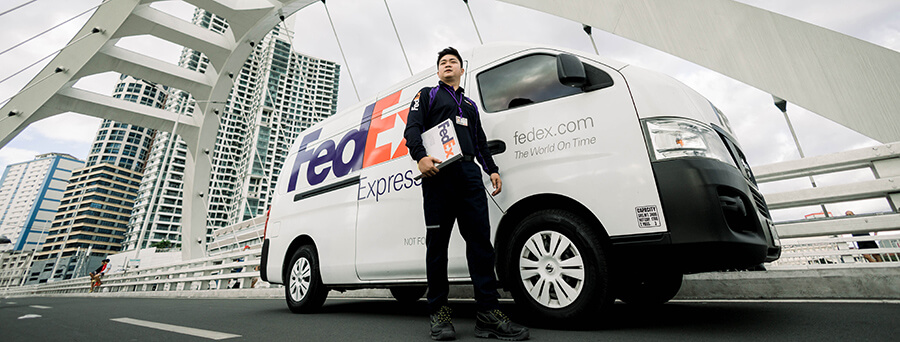3 Global Growth Trends To Watch In 2024
Our latest report in collaboration with Forbes Insights reveals the 3 global growth trends worth watching for small and medium businesses in 2024.
As 2024 unfolds, business owners, entrepreneurs and analysts will be assessing the current business landscape, weighing growth opportunities against the challenges and risks.
So far, the Asia Pacific (APAC) region remains resilient compared to others around the world. Despite global macroeconomic challenges, inflation and interest rates have stabilized, meaning consumer confidence has rebounded in many markets in the region. Although businesses continue to grapple with higher operating costs and persistent geopolitical uncertainties, some promising offshoots have emerged.
To dive deeper into the APAC landscape and uncover the insights small and medium businesses (SMEs) need to know right now, we conducted a study in collaboration with Forbes Insights. One thing our research report tells us? SMEs in Asia are ready to expand their global reach in the near-term. Read on to find out the three key trends that will help them to grow.
So far, the Asia Pacific (APAC) region remains resilient compared to others around the world. Despite global macroeconomic challenges, inflation and interest rates have stabilized, meaning consumer confidence has rebounded in many markets in the region. Although businesses continue to grapple with higher operating costs and persistent geopolitical uncertainties, some promising offshoots have emerged.
To dive deeper into the APAC landscape and uncover the insights small and medium businesses (SMEs) need to know right now, we conducted a study in collaboration with Forbes Insights. One thing our research report tells us? SMEs in Asia are ready to expand their global reach in the near-term. Read on to find out the three key trends that will help them to grow.
Download our report for the latest SME megatrends

Select the market you’re from below to download the full report:
Australia | China | Hong Kong | Indonesia | Japan | Malaysia | New Zealand | Philippines | Singapore | South Korea | Taiwan | Thailand | Vietnam
Southeast Asia emerged as the stand-out region that businesses are eyeing for future growth potential. International trade is high on priority lists, with many also looking to markets in Europe. And it’s not just new customers companies are looking to acquire. Many are seeking new supplier relationships, particularly within Asia.
Small businesses often have just one person in charge of packing and shipping. In many cases, they don’t have any previous experience in logistics. So it’s no surprise that navigating tricky tariff schedules, tax entities and customs clearance can pose challenges. Addressing these can unlock more growth for businesses.
Download the full report to discover the other key barriers to growth for APAC SMEs.
One thing that SMEs are communicating loud and clear: technology is helping them punch way above their weight. But with opportunity comes challenges around budget, tech adoption and the right talent to action tech transformation. For smaller companies with limited budgets, partnerships may be the answer. Companies that can tap smart collaborations or the right platforms will be able to value-add while staying cost-effective.
Australia | China | Hong Kong | Indonesia | Japan | Malaysia | New Zealand | Philippines | Singapore | South Korea | Taiwan | Thailand | Vietnam
A sneak peek of the insights: SMEs are ready to tap new global markets
1. Business leaders see the most growth potential in Southeast Asia
Southeast Asia emerged as the stand-out region that businesses are eyeing for future growth potential. International trade is high on priority lists, with many also looking to markets in Europe. And it’s not just new customers companies are looking to acquire. Many are seeking new supplier relationships, particularly within Asia.
2. Customs clearance poses the biggest barrier to cross-border commerce
Small businesses often have just one person in charge of packing and shipping. In many cases, they don’t have any previous experience in logistics. So it’s no surprise that navigating tricky tariff schedules, tax entities and customs clearance can pose challenges. Addressing these can unlock more growth for businesses.
Download the full report to discover the other key barriers to growth for APAC SMEs.
3. Accelerating digital transformation offers the greatest growth potential
One thing that SMEs are communicating loud and clear: technology is helping them punch way above their weight. But with opportunity comes challenges around budget, tech adoption and the right talent to action tech transformation. For smaller companies with limited budgets, partnerships may be the answer. Companies that can tap smart collaborations or the right platforms will be able to value-add while staying cost-effective.

Cross-border expansion: evaluating what’s next
The global retail e-commerce market is estimated to reach a compound annual growth rate of 9.8% between 2024 and 2028, with India, China, and Indonesia among the biggest markets in APAC.
To expand cross-border, companies need to balance priorities and map out the growth strategy that makes the most sense for their business model. One of the strongest drivers of growth in the region is the Asia-Europe Lane, which is growing at 8.5% annually.
As ASEAN’s third-largest trading partner, the European Union (EU) presents a vast and diverse customer base, offering the seamless movement of goods between member states without customs duties or restrictions on quantity.
Meanwhile, the rise in intra-Asia is opening fresh opportunities for both SMEs and e-commerce operators in the region. SMEs looking to unlock the full potential of cross-border commerce will require increased support in logistics and operations.
Say hello to the innovation economy
The innovation economy also significantly impacts SMEs by driving technological advancements, shaping evolving consumer expectations, and transforming digital marketing strategies.
To foster this spirit of innovation, FedEx is introducing a new digital platform, fdx, which will offer end-to-end e-commerce solutions for businesses of all sizes. This first-of-its-kind data-driven commerce platform will connect the entire customer journey, making it easier for SMEs to manage their supply chain.
Besides helping merchants to increase conversion, optimize fulfillment, and streamline returns, fdx provides data and insights that improve visibility and connected capabilities across the customer journey. All of this helps businesses make more strategic logistics decisions.
As these transformative trends reshape the business landscape, SMEs find themselves uniquely positioned to harness exponential growth. By leveraging these trends, SMEs can optimize supply chains, drive innovation, and propel themselves to new heights of success.
***
Our “3 Global Growth Trends Worth Watching For Small And Midsized Companies In The Asia-Pacific” report surveyed 250 small and mid-sized businesses based in APAC. For more information on the methodology and more detail on the trends highlighted, download the report now.
-
Previous
 How To Ship Pharmaceuticals In Asia
How To Ship Pharmaceuticals In Asia -
NextHow To Tackle Thailand’s Waste Management Challenges

















 The Latest
The Latest